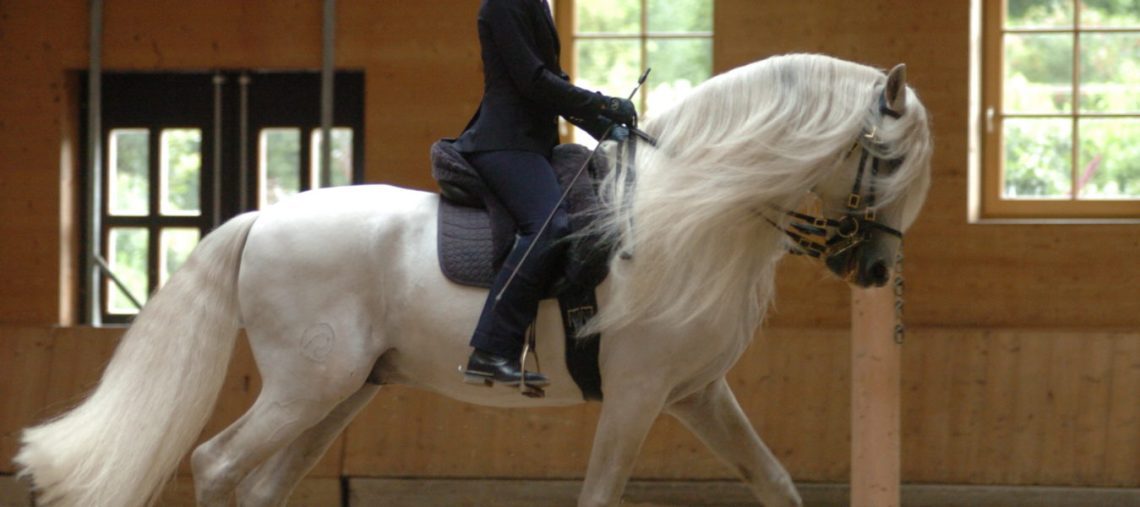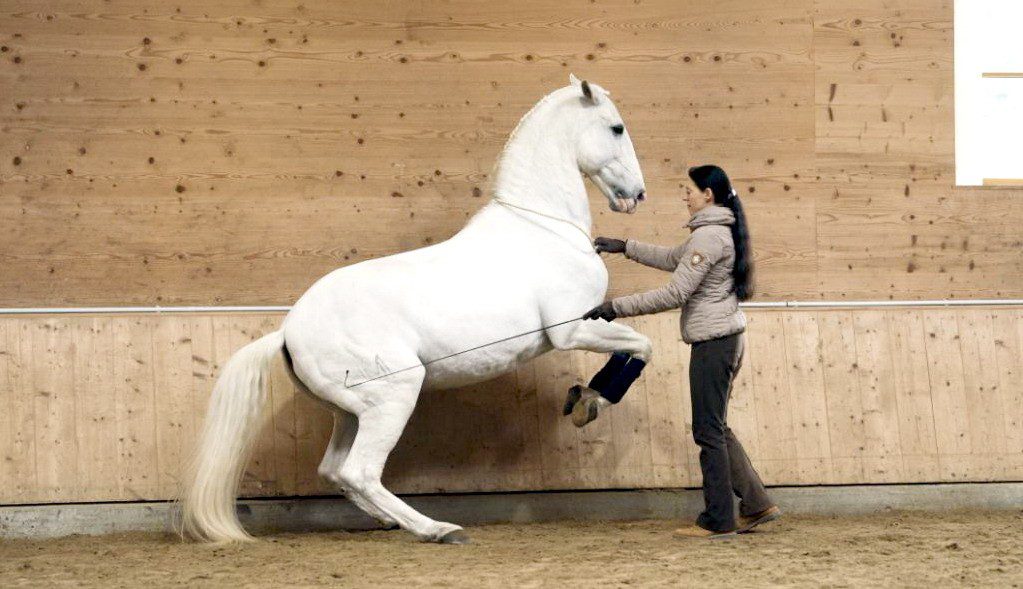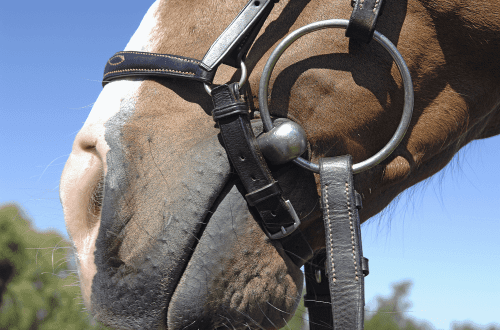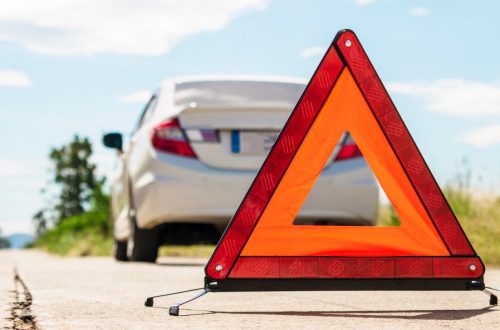
Interview with Anja Beran: tips for riders
Interview with Anya Beran: tips for riders
– Anya, how did your professional path begin? What brought you to horses?
My father, grandfather and uncle were hunters, so I spent hours riding through the forest on my little Arab, accompanied by my mother on the frieze. Since childhood, it was clear that when I grow up, I will become either a professional hunter or a professional rider … In the end, I made a decision in favor of horses.
At the age of 16, I went with my mother to Portugal to learn more about classical dressage. There I met Manuel Jorge de Oliveiro, with whom I studied until I was 41 years old. In Germany, I met the French rider Marc de Brussi and worked with him until 2001. Under his guidance, I learned patience and logical training planning, I learned where to start training young horses and how to start working with difficult horses.
My first teacher had a Lipizzan stallion trained to high school level. Both the horse and the trainer’s riding style fascinated me, and I asked where I could learn this. The trainer said that I should go to Portugal, because only there the classical way of working with horses still exists. The Portuguese trainer taught me how to work with the asymmetry of the horse and achieve the highest level of balance and lightness.
What is the best way to select a horse? What should it be so that the rider is comfortable both in the saddle and when communicating on the ground?
A “comfortable” horse should have a good body, gaits and character. But if you want to be a good trainer, it doesn’t matter what kind of horse you are, because classic dressage is for the horse, not the other way around. Classic helps the horse stay healthy and find his balance of mind and body. This means that the more difficult the horse, the more you will learn as a rider.
Of course, by the beginning of the training process, the horse needs to be in good shape. This means that she must be properly fed, kept in decent conditions, and have sufficient opportunities to run in the paddock or pasture. She also needs a professional farrier.

– How do you usually start training a horse?
We always start by walking in the hands and lunging, but only on the cavesson. In this way the horse learns to go forward when we use the voice and whip, and to slow down or stop when we use the voice and cavesson. We use the time allotted for this basic training to study the horse, to understand the features of its body and character.
Training must be tailored to each horse! It must correspond to the physical condition of the animal, its age and character. Therefore, it is impossible to say with certainty that stallions need this, and mares need that. Every horse needs a different approach. Weak horses need to be well gymnastics on lateral movements. As a rule, horses are weak not from incorrect work, but from birth, but a competent soft training system helps them build muscle.

What problems of riders with horses do you most often observe in practice?
The biggest problem is misunderstanding on both sides. Many riders are unable to use their body language in a way that the horse understands because they cannot control their seat. Most often, riders interfere with the horse, disturb it, hurt it, give stupid commands, because they lack coordination.
– In cases where horses seem unmanageable, their riders are often advised to use a more rigorous bit or increase loads. What do you say?
Horses that do not obey the controls (following the reins, over the reins, dropping off the reins, unresponsive or tight to the leg, etc.) are horses that have lost confidence in the rider. In such cases, it is necessary to very delicately start all over again, with the basic work. This means the actual absence of reins. Later, the horse will again understand the meaning of the rider’s foot and learn to walk forward immediately after the command.
– Which horse would you prefer and which one would you recommend to a beginner?
I like Lusitanos because they are very sensitive and full of fire, but this breed is not the best choice for a beginner. Beginning riders want calm horses with good natural balance, natural rhythm, balance and three comfortable gaits. Such horses can be found in almost any breed. Of course, the higher the level of training of the horse, the better for the beginner.
If a horse knows how to do piaffe, passage, pirouettes, all lateral movements and good changes, he will become an indispensable teacher. But, of course, even such horses will need to work under the saddle of an experienced handler 2-3 times a week (they will need to be corrected after the work of beginners and kept in shape).
– For many riders, the issue is not so much the initial preparation of the horse, but the correction of one with which many mistakes have already been made. What steps need to be taken along the way?
It is difficult to give advice to other coaches, but for me the most important thing is to first of all analyze the situation, find and identify the problems of the horse: where it is enslaved or clamped, where it is bent by nature. What about the back, is it strong or weak? How is the horse balanced and how does he coordinate his body? After answering these questions, you can engage in therapy. I select combinations of gymnastic exercises separately for each horse. Lateral movements and their combinations help to balance the horse, soften his inflexibility and strengthen his weak side; lateral work also helps to muscle the back and relax the animal. It is necessary to select individual programs, and then step by step it will be possible to achieve success. The work requires calmness, patience and time, but in the end it will bring an excellent result.
– What do you think about Russian horses?
I worked only with a few Terts and Budyonnovtsy. The horses were excellent, galloping excellently and piaffing superbly. I think the horses of Russian breeds are strong and beautiful, and also very attuned to work. The horses I have trained have also been very sensitive. Nuno Oliveira trained several Budyonny players to the level of high school, and I think he liked them.
– There are many people in Russia who are fascinated by equestrian bullfighting. Have the participating horses been classically trained?
A good bullfighting horse must be classically trained, have excellent balance and respond immediately to changes in the rider’s position. Being in a forward balance, such a horse can never be as fast and flexible as required. Only with classical training will a bullfighting horse be able to perform its work easily, elegantly and remain in excellent shape for many years. Of course, just like in the modern sport, in the world of bullfighting you can see riders who train horses with new/modern methods, or those who try to prepare a horse in a very short period of time, because “time is money”. In the end, the horse pays for it all.
– There is an expression “an arm without a leg, a leg without an arm”, denoting a signal for the horse with one means of control. It is sometimes attributed to Guérinier, who, on the contrary, spoke of the coordinated use of the hand and foot. What is really best for the horse?
The phrase you are talking about belongs to Bosch, it is very important and understandable. But it does not contradict the coordination of means of control, which Guerinier speaks of. Guérinier is a master of lightness and excels at explaining the principle of “descente de main” (lowering the hand). Without good coordination of controls over time, the rider will never achieve results. For example, sometimes you need to use the leg very quickly, then the arm, all in combination with the seat to help the horse find balance. This is exactly what Guerinier wanted to explain.
– What would you advise for the versatile training of the horse, and what should a person who wants development be guided by?
For a rider who wants to progress, the following is important:
– be able to work with several horses trained to the level of higher education;
– have a very good coach;
– exercise daily
– read books by old masters, look at the work of good riders and ask the trainer a lot of questions.
For the versatile development of the horse, it is important to occasionally change the environment and make the activities as diverse as possible.
– What should be done if the horse resists, moves away from the direction, tries to get rid of the rider?
If there is still a chance to help such a horse (some of them, alas, are completely broken), you need to start with basic work, with cord lessons. Then, when the horse relaxes, it will be possible to continue lunging with the rider in the saddle. With such a horse you need to be very delicate, gentle and patient. Only when the horse begins to relax with the rider on his back, you can gradually move on to gymnastics and work on lateral movements. This will help loosen up the horse’s tight body, making him softer and happier as his back pain disappears. Over time, the moment will come when the horse will feel that the rider is not an enemy and does not fight with him, but, on the contrary, helps him to feel his body. At this point the horse will start to trust again and the progress of the training will bring many happy moments.
Interview prepared and conducted Valera Shablya and Vlad Maximov.





